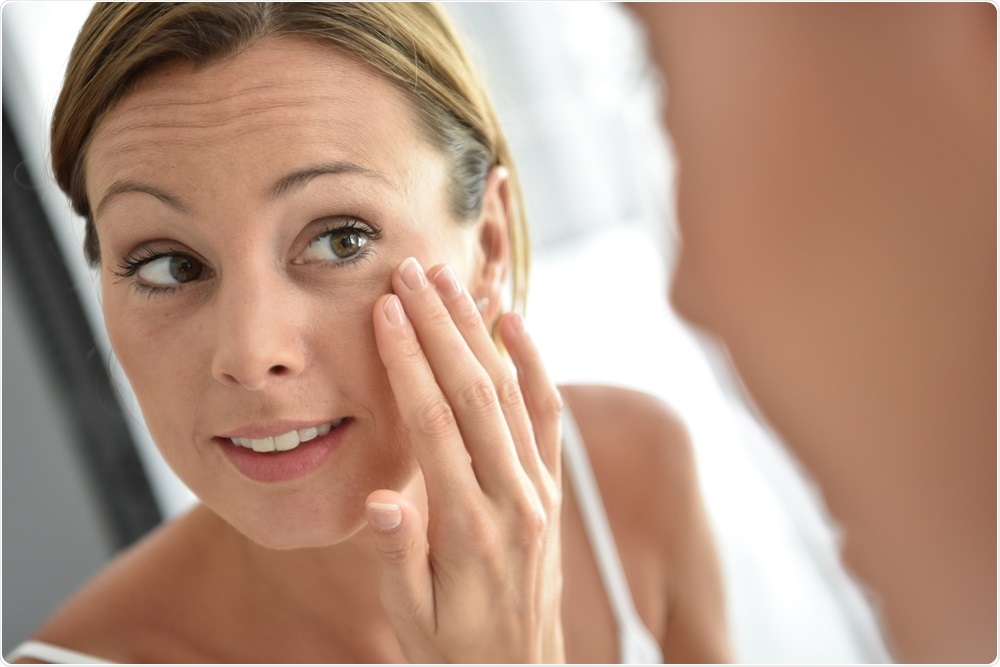A new study has found that people who apply a moisturizer containing SPF or sunscreen may be missing the facial areas that are most at risk of developing skin cancer.
 goodluz | Shutterstock
goodluz | Shutterstock
The research also showed that failure to ensure proper coverage is more likely when people use a moisturizer containing Sun Protection Factor (SPF) than when they use sunscreen.
Researchers from the University of Liverpool assessed how 84 individuals (62 women and 22 men) applied either SPF30 moisturizer or sunscreen by using a UV-sensitive DSLR camera to see how well they had covered their faces.
Images were processed for facial landmark identification followed by segmentation mapping of hue saturation values to identify areas of the face that were/were not covered.”
Eyelids are often missed when applying sunscreen
As reported in the journal PLoS One, the researchers found that participants covered less skin when they used moisturizer, compared with when they used sunscreen.
Those who used moisturizer failed to cover almost 17% of the face, while those who used sunscreen only missed 11%.
The difference was primarily due to decreased coverage of the eyelid area when moisturizer was used (21% missed), compared with when sunscreen was used (14% missed).
Study author, Austin McCormick, says the eyelid skin is very thin and is the area most vulnerable to UV damage and skin cancer, yet “people were unaware they had not covered them.”
Eyelid cancers account for around 10% of all basal cell carcinomas in the UK, so people should be particularly attentive when applying SPF products to the eyelid area, warns McCormick.
He advises that people planning to spend prolonged periods in the sun use sunscreen rather than moisturizer:
If using moisturiser, we advise one with SPF. Any SPF is better than none, but it should not be considered the equal of sunscreen."
Moisturizers are not as effective as sunscreen
Holly Barber from the British Association of Dermatologists advises that SPF moisturizers are less likely to be rub- and water-resistant. The moisturizers do not bind to the skin as effectively as sunscreen and are not intended to provide the same degree of protection needed during prolonged periods of sun exposure.
McCormick and team say that despite the potential advantages in terms of increased frequency of application of moisturizer, regions of the face that are more at risk of cancer are often unprotected and that most people are unaware they are at risk.
“As such, alternative sun-protection strategies should be promoted,” they conclude.
Barber suggests that wearing protective clothing such as sunglasses and sunhats could help to avoid sunburn in areas that get missed when applying sun protection.